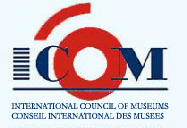 |
|
|||
|
Sharing through primarily European networks A though on intangible heritage and CIDOC CRM CIDOC i Shanghai 2010 The UNESCO convention on the protection of the intangible cultural heritage defines intangible cultural heritage as “oral traditions, performing arts, social practices, rituals, ... or the [k]nowledge and skills to produce traditional crafts” (http://www.unesco.org/culture/ich/index.php?pg=00002). ICOM has worked towards the incorporation of intangible heritage within museums. This is done by giving tangible and intangible heritage equal emphasis. However, what are the practical implications of this, and how do, or can, museums document intangible heritage. For many museums documentation has been primarily through the retrieval of artifacts – physical objects, which have been dutifully measured, classified, catalogued and preserved in order to maintain these objects for future generations. How then will a museum collect, classify, catalogue and preserve intangible heritage? How does one catalogue a ritual dance, or an oral story that is constantly changing and developing with each performance or telling? Although there was no clear consensus upon how museums can address these challenges the need to rethink how museums document human activities has been brought forward. The challenge is how to incorporate documentation of intangible heritage with traditional museum documentation methods. Crofts has addressed an important issue here which will become ever more important as museums begin dealing with the implications around documentation of intangible heritage: A thought provoking paper. The majority of papers delivered at this year’s conference were primarily dominated by European museums on sharing of museum collections and information on line. With the greater part of the papers delivered concentrating upon how CIDOCs extensive work on their Conceptual Reference Model (CIDOC CRM), along with LIDO, and ATHENA mapping, was allowing museums collections to become increasingly available for a wider public within one platform. CIDOCs CRM aim is to “provide definitions and a formal structure for describing the implicit and explicit concepts and relationships used in cultural heritage documentation”. CRM “is intended to be a common language for domain experts and implementers to formulate requirements for information systems and to serve as a guide for good practice of conceptual modeling” (http://cidoc.icom.museum/WG_Data_Harvesting(en)(E1).xml). CIDOCs CRM was developed into an ISO standard in 2006 (21127:2006) (http://www.iso.org/iso/iso_catalogue/catalogue_tc/catalogue_detail.htm?csnumber=34424). This ISO standard functions as a guideline for museums and other cultural heritage institutions on digital exchanging of information. LIDO (Lightweight Information Describing Objects) is a “harvesting schema for delivering metadata for use in the service environment of an organization’s online collections database, portals, and aggregations” (http://www.athenaeurope.org/index.php?en/112/news/21/lido-the-harvesting-format-used-within-athena). While ATHENAs goal is to coordinate digital standards and activities of European museums through their participation in Europeana; thus providing “[a]ccess to cultural heritage networks across Europe” (http://www.athenaeurope.org) (http://www.group.europeana.eu/web/guest/details-athena/). Consequently through the implementation of CIDOCs CRM and LIDO the ability of museum collections to cross geographical regions as well as disciplines which can be viewed, for example, in a common web-site has increased. Norway is also involved in the implementation of CIDOCs CRM as it is used by the Norwegian university museums joint data-project MUSIT; allowing the university museums to maintain and develop an international platform for exchange of information and collections. This work is important as one cannot disregard that the internet and web-publishing of museum collections has become an important arena for museums. However, although CRM, LIDO, and ATHENA are important tools for museums I was left with a feeling of ‘I’ve heard this all before’. The majority of papers, that I heard, had little to add to the general discussion of documentation methods which can be applied throughout the museum world and not just European museums. It has been a few years since I’ve participated in a CIDOC meeting, but although the tools for web-publishing had increased and were being implemented by a number of, again primarily European museums, I felt that this years conference lacked a global theme: A theme that the majority of museums could relate to and not just primarily European museums. (Although this is semi-understandable since the majority of CIDOC committee members are from European countries.) Even though I found that this years CIDOCs meetings a bit of a let down this may have to do with the fact that I also felt that the ICOM meeting in China was, on the whole, a disappointment. Besides the logical problems (inadequate numbers of programs in English, little to no information etc), I had traveled there expecting to be able to participate in other ICOM committees meetings and lectures; thus receiving a more in depth museum experience. This was harder said than done. There was little joint information on committees programs. The committees were spread far and wide throughout Shanghai and meeting areas for informal discussions were lacking. I felt that ICOM missed an opportunity to increase interdisciplinary understanding and exchange of information and ideas since committees rarely hold their meetings at the same place. |
| ▲ til toppen Tilbake til reiserapporter 2010 |